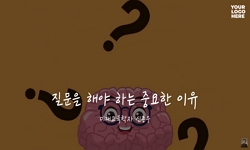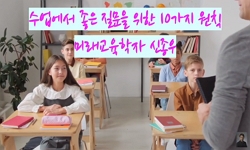This study considers TV talk show from a self-disclosure perspective. Researchuestions are two: one is to probe how the talk show guests self-disclosed themselvesnd the other is how the talk show MCs were using questions and interventions. ‘Healinga...
http://chineseinput.net/에서 pinyin(병음)방식으로 중국어를 변환할 수 있습니다.
변환된 중국어를 복사하여 사용하시면 됩니다.
- 中文 을 입력하시려면 zhongwen을 입력하시고 space를누르시면됩니다.
- 北京 을 입력하시려면 beijing을 입력하시고 space를 누르시면 됩니다.

TV토크쇼에서 나타난 자기노출에 관한 연구 : 어떻게 드러내고 어떻게 이끌어내는가 ? - <힐링캠프>조혜련, 홍석천, 장윤정 편을 중심으로 = The way of Self-Disclosure on TV Talk Show : questions, interventions, and responses.
한글로보기https://www.riss.kr/link?id=A104966868
-
저자
오미영 (가천대학교)
- 발행기관
- 학술지명
- 권호사항
-
발행연도
2014
-
작성언어
Korean
-
주제어
self-disclosure ; talk show ; intimacy ; Johari’s window ; questions ; interventions ; 자기노출 ; 토크쇼 ; 친밀감 ; 조해리의 창 ; 질문 ; 끼어들기
-
등재정보
KCI등재
-
자료형태
학술저널
-
수록면
73-102(30쪽)
-
KCI 피인용횟수
1
- 제공처
-
0
상세조회 -
0
다운로드
부가정보
다국어 초록 (Multilingual Abstract)
This study considers TV talk show from a self-disclosure perspective. Researchuestions are two: one is to probe how the talk show guests self-disclosed themselvesnd the other is how the talk show MCs were using questions and interventions. ‘Healingamp’ – one of the most popular talk shows in Korea since 2011 - is a subject ofnalysis. Discussed theories are self-disclosure, intimacy, Johari’s window, questionsnd intervention. The results show below:The talk show guests self disclose about hidden area of themselves most frequentlyr the sake of publics’s attention. The talk show story is mainly consist of personalecrets, trouble things, family stories, and love affairs. Talk show guests revealemselves high level mostly. They can have enough time to self disclose of hidden areaesult in a strategic impression management, and arouse TV viewer’s interest – the aimTV talk show –coincidentally. The questions use by talk show MCs as an establishedrm. Two types of questions - information seeking and fact confirm – are shownequently instead of an expression of emotion. The most common type of interventiony MCs is reaction. They intervene guests always using seven types, but not samely.
looks like they appear influenced by guests, and their roles are also establishedccording to a social stereotypes. The results show that there is no resemblance between interpersonal and mediatedcommunication situation, and it suggest that TV talk shows and its guests are sharinggive and take relationship.
국문 초록 (Abstract)
본연구는 <힐링캠프>를 분석 대상으로 삼아 토크쇼 출연자의 자기노출 영역과 노출 정도가 어떻게 나타나고 있는지, 이를 유도하기 위한 진행자 질문과 끼어들기 유형은 무엇인지 살펴...
본연구는 <힐링캠프>를 분석 대상으로 삼아 토크쇼 출연자의 자기노출 영역과 노출 정도가 어떻게 나타나고 있는지, 이를 유도하기 위한 진행자 질문과 끼어들기 유형은 무엇인지 살펴보았다. 친밀감과 자기노출, ‘조해리의 창’, 그리고 질문과 끼어들기에 대한 기존논의를 바탕으로 도출한 연구 결과는 다음과 같다.
첫째, 토크쇼 출연자들의 자기노출은 숨겨진 영역에 주로 집중되어 있었다. 노출 시간이 길었던 소재는 사적 비밀, 괴롭고 힘든 이야기, 가족 이야기, 연애 이야기였다. 토크쇼는 출연자가 처한 개인 사정을 해명할 수 있는 시간을 충분히 부여하였으며, 출연자들은 이에 호응하여적극적인 자기노출 태도를 보여주었다.
둘째, 토크쇼 진행자의 질문에는 일정한 패턴이 나타났다. 즉, 정보 확인과 사실 확인 요청형태가 주로 사용되었고 정서 표현 질문은 드물었다. 분석 대상 토크쇼 출연자의 자기노출 영역에 개인 차이가 있었음에도 전 편에 걸쳐 이러한 질문 패턴이 유지되고 있다는 것은 토크쇼가 구조화된 내러티브로 제작된다는 사실을 보여준다.
셋째, 진행자의 끼어들기로는 청자의 간단한 반응 신호가 가장 흔하게 사용되고 있었다. 흥미로운 점은 출연자에 따라 진행자의 끼어들기가 상대적으로 소극적이거나 적극적으로 나타났다는 것이다. 또한, 여성 보조 MC의 경우 주로 반응과 친밀감을 나타내는 끼어들기에 관여한 대신, 남성들은 무례를 감당해야 하는 비우호적 끼어들기를 전담하고 있었다. 이는 토크쇼진행자 역할이 사전에 설정되어 있음을 알게 한다.
본 연구 결과는 일반적인 대인관계에서 일어나는 자기노출과 달리, 토크쇼에서의 자기노출은 전략적 인상관리 차원에서 이를 활용하려는 출연자와 대중의 호기심을 충족시키고자 하는제작진의 이해관계가 충족되는 장이라는 것을 보여준다. 따라서 이러한 자기노출이 과연 ‘진짜’인가에 대한 문제를 제기하게 만든다. 하지만 이러한 사실을 확인하는 수준에 그쳤다는 것이 본 연구의 한계이다
참고문헌 (Reference)
1 최인자, "한국 T.V 토크쇼의 서사 담화 패턴과 그 문화적 기능 -주부 대상 프로그램을 중심으로-" 이중언어학회 (22) : 367-382, 2003
2 이원표, "토크쇼에서의 말 끼어들기 : 담화 기능과 사회적 변인" 6 (6): 23-59, 1999
3 장민정, "토크쇼 대화에 나타난 질문-응대의 전략 분석" 한국텍스트언어학회 30 : 211-236, 2011
4 Livingstone, S., "텔레비전과 공중" 커뮤니케이션북스 1994
5 함헌, "텔레비전 토크쇼 프로그램의 서사와 사회문화적 함의" 27 : 17-23, 2008
6 이희은, "텔레비전 버라이어티쇼의 사적인 이야기 서술" 사단법인 언론과 사회 19 (19): 2-48, 2011
7 Sontag, S., "타인의 고통" 2003
8 김교헌, "친교 관계에서 자기노출의 기능" 11 (11): 196-222, 1992
9 김응숙, "증언과 고백의 세계: 텔레비전의 사사화와 치료윤리" 한국지역언론학회 4 (4): 5-34, 2004
10 Peters, J. D., "Witnessing. Media" 23 : 707-723, 2001
1 최인자, "한국 T.V 토크쇼의 서사 담화 패턴과 그 문화적 기능 -주부 대상 프로그램을 중심으로-" 이중언어학회 (22) : 367-382, 2003
2 이원표, "토크쇼에서의 말 끼어들기 : 담화 기능과 사회적 변인" 6 (6): 23-59, 1999
3 장민정, "토크쇼 대화에 나타난 질문-응대의 전략 분석" 한국텍스트언어학회 30 : 211-236, 2011
4 Livingstone, S., "텔레비전과 공중" 커뮤니케이션북스 1994
5 함헌, "텔레비전 토크쇼 프로그램의 서사와 사회문화적 함의" 27 : 17-23, 2008
6 이희은, "텔레비전 버라이어티쇼의 사적인 이야기 서술" 사단법인 언론과 사회 19 (19): 2-48, 2011
7 Sontag, S., "타인의 고통" 2003
8 김교헌, "친교 관계에서 자기노출의 기능" 11 (11): 196-222, 1992
9 김응숙, "증언과 고백의 세계: 텔레비전의 사사화와 치료윤리" 한국지역언론학회 4 (4): 5-34, 2004
10 Peters, J. D., "Witnessing. Media" 23 : 707-723, 2001
11 Rentschler, C. A., "Witnessing : US citizenship and the vicarious experience of suffering. Media" 26 : 296-304, 2004
12 Meyrowitz, J., "We liked to watch : television as progenitor of the surveillance society" 625 : 32-48, 2009
13 Abt, V., "The shameless world of Phil, Sally and Oprah : Television talk shows and the deconstructing of society" 28 (28): 171-192, 1994
14 Prager, K. J., "The psychology of intimacy" Guilford Press 1995
15 Sullivan, H. S., "The interpersonal theory of psychiatry" Norton 1953
16 Kim, J., "The facebook paths to happiness: Effects of the number of facebook friends and self-prsentation on subjective well-being" 14 (14): 359-364, 2011
17 Ellis, J., "The Performance on television of sincerely felt emotion" 625 : 32-48, 2009
18 Newstrom, J. W., "The Johari Window : A Reconceptualization" 10 : 117-120, 1983
19 Aslama, M., "Talking alone : reality TV, emotions and authenticity" 9 (9): 167-184, 2006
20 Gamson, J., "Taking the talk show challenge : Television, emotion, and public spheres" 6 (6): 190-205, 1999
21 Rosenberge, H., "TV blurring reality: Confusion is the inevitable result of presenting everything as entertainment" 21 : 1994
22 King, B., "Stardom, celebrity and the para-confession" 18 (18): 115-132, 2008
23 Berg, J. H., "Self-disclosure: Theory, research, and therapy" Plenum Press 101-130, 1987
24 Jourd, S. M., "Self-disclosure : An experimental analysis of the transparent self" Wiley 1971
25 Derlega, V. J., "Self-disclosure" Sage 1993
26 Tolsedt, B. E., "Relation of verbal, affection, and physical intimacy to martial satisfaction" 30 (30): 573-580, 1983
27 White, M., "Reality squared: Televisual discourse on the real" Rutgers University Press 313-321, 2002
28 Ilie, C., "Question-response argumentation in talk shows" 31 (31): 975-999, 1999
29 Levinson, Stephen, "Pragmatics" Cambridge University Press 1983
30 Davis, D., "Personality, roles, and social behavior" Springer-Verlag 85-139, 1982
31 Turner, G., "Ordinary people and the media: The demotic turn" Sage 2010
32 Beach, S. R. H., "Marital therapy for depression : Theoretical foundation, current status, and future directions" 25 : 345-372, 1994
33 Lunt, P., "Jerry Springer Show as an emotional public sphere" 27 (27): 59-81, 2005
34 Perlman, D., "Intimate relationships: Development, dynamics and deterioration" Sage 13-42, 1987
35 Morton, T., "Intimacy and reciprocity of exchange : A comparison of spouses and strangers" 36 : 72-81, 1978
36 Gelman, R., "Interpersonal liking and self-disclosure" 25 : 1549-1551, 1978
37 Tomlinson, J., "Globalization and culture" University of Chicago Press 1999
38 Argyle, M., "Eye contact, distance, and affiliation" 28 : 289-304, 1965
39 Trammell, K. D., "Examining the new influencers : A selfpresentation study of A-list blogs" 82 (82): 968-982, 2005
40 Chelune, G. J., "Disclosure flexibility and social-situational perceptions" 45 : 1139-1143, 1977
41 Carpignano, P., "Chatter in the age of electronic reproduction : Talk television and the"pubic mind"" 25 (25): 33-55, 1990
42 Bartholomew, K., "Avoidance of intimacy : an attachment perspective" 7 (7): 147-178, 1990
43 Patterson, M. L., "An arousal model of interpersonal intimacy" 83 : 235-245, 1976
44 Patterson, M. L., "A sequential functional model of nonverbal exchange" 89 : 231-249, 1982
동일학술지(권/호) 다른 논문
-
- 청운대학교 방송·예술연구소
- 백지혜
- 2014
- KCI등재
-
수신료결정과정의 입법교착에 관한 연구 : 법적 행위자별 행위 담론 분석을 중심으로
- 청운대학교 방송·예술연구소
- 정인숙
- 2014
- KCI등재
-
음악 오디션 프로그램에서의 시청자 참여에 관한 탐색적 연구 : 시청자 참여방식에 영향을 미치는 변인을 중심으로
- 청운대학교 방송·예술연구소
- 은혜정
- 2014
- KCI등재
-
공영방송 PD와 시청자간의 방송 공익성에 대한 인식 차이에 관한 연구
- 청운대학교 방송·예술연구소
- 장하용
- 2014
- KCI등재
분석정보
인용정보 인용지수 설명보기
학술지 이력
| 연월일 | 이력구분 | 이력상세 | 등재구분 |
|---|---|---|---|
| 2018 | 평가예정 | 신규평가 신청대상 (신규평가) | |
| 2017-12-01 | 평가 | 등재후보 탈락 (계속평가) | |
| 2016-12-01 | 평가 | 등재후보로 하락 (계속평가) |  |
| 2012-01-01 | 평가 | 등재학술지 선정 (등재후보2차) |  |
| 2011-01-01 | 평가 | 등재후보 1차 PASS () |  |
| 2009-04-17 | 학회명변경 | 한글명 : 방송산업연구소 -> 방송·예술연구소영문명 : Telecommunications Research Institute -> Broadcasting & Arts Research Institute |  |
| 2009-01-01 | 평가 | 등재후보학술지 선정 () |  |
학술지 인용정보
| 기준연도 | WOS-KCI 통합IF(2년) | KCIF(2년) | KCIF(3년) |
|---|---|---|---|
| 2016 | 0.31 | 0.31 | 0.34 |
| KCIF(4년) | KCIF(5년) | 중심성지수(3년) | 즉시성지수 |
| 0.28 | 0.26 | 0.535 | 0 |




 KCI
KCI






